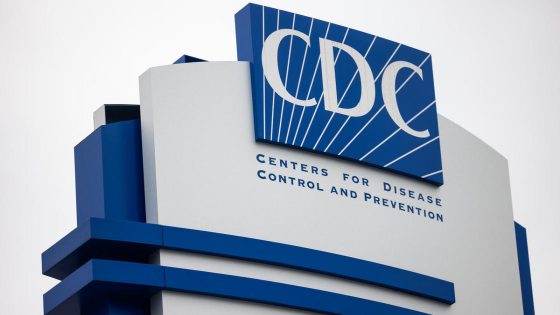Nearly a quarter of syphilis cases in the U.S. were being diagnosed in women in 2022, the Centers for Disease Control and Prevention reported Tuesday, in a sign that the nation’s “alarming” epidemic of the sexually transmitted infection is increasingly spreading among heterosexual couples.
The number of syphilis cases reported in women climbed 19.5% in 2022. In all, there were 14,652 cases of primary and secondary syphilis, the first two stages of the disease, reported in women, making up roughly a quarter of the 59,016 cases nationwide. In 2018, just 14% of syphilis cases had been reported in women.
Men who have sex with men continue to make up a disproportionately large share of cases, the CDC says.
A worsening syphilis epidemic
Health officials have warned for years about the nation’s worsening syphilis epidemic. The CDC’s final figures for 2022 are the largest number diagnosed nationwide since the 1950s.
While tens of thousands of syphilis cases and deaths used to be reported every year in the 1940s, the rollout of penicillin led to steep drops in rates of the disease over the last century.
Cases last peaked nationwide in the 1990s, before a yearslong decline that health officials say was likely driven by changes in sexual behavior due to the HIV epidemic.
“Controlling syphilis and other sexually transmitted infections (STIs) requires robust public health systems and workforces, and prevention strategies that are tailored to the specific needs of affected communities. There are no shortcuts to syphilis control,” Dr. Jonathan Mermin, director of the CDC’s National Center for HIV, Viral Hepatitis, STD, and TB Prevention, said in an emailed statement.
Syphilis rates have increased every year since 2011, and remain disproportionately high especially among Black and American Indian populations.
Mermin said improving diagnosis and treatment efforts, as well as redoubling efforts to curb other factors like substance abuse that fuel risky behaviors enabling the bacteria’s spread, will be needed to stop the epidemic.
“We know that syphilis in the heterosexual population and drug use, particularly methamphetamine use, are intersecting epidemics, and syphilis has spread among heterosexual men and women for decades,” he said.
Symptoms of syphilis
Syphilis disease is caused by the bacteria T. pallidum. Signs of syphilis typically show up first as a single painless ulcer. Untreated syphilis can lead to more serious complications if it spreads to other parts of the body, like brain or nervous infections doctors call neurosyphilis.
Rates of congenital syphilis — a potentially life threatening form of syphilis, when the bacteria is passed to babies during pregnancy — have also continued to climb in recent years.
More than 102 cases were reported for every 100,000 babies born in 2022 across the U.S., the CDC tallies. That amounts to a rate multiple times worse than other peer countries.
Rates of other STIs
The increase in 2022 also now marks a divergence from some other sexually transmitted infections, or STIs. Chlamydia cases were roughly flat in 2022 compared to the year before. Gonorrhea rates have dropped, down 8.7% from 2021.
Mermin said the agency was “cautiously optimistic” about the gonorrhea slowdown and would be closely tracking 2023’s figures to see if that trend continues to improve.
“CDC is examining this finding closely and will be looking to final 2023 data to better understand if this signals a decline in infections and to better understand where, why, and among whom the decrease occurred with the hope we can expand on what’s working,” he said.
Shortages and funding cuts
The CDC’s final tally for 2022 comes as health officials are warning that 2023’s case counts of sexually transmitted infections could be worse, in the wake of funding cuts and shortages of a key treatment.
“The CDC’s latest STI data shows that our nation is facing a rapidly deteriorating public health crisis with real lives at stake. STIs – especially syphilis – will continue to spiral out of control until the administration and Congress provide communities with the funding they need,” the National Coalition of STD Directors said in a statement.
The group has previously voiced frustration over an ongoing monthslong shortage of Pfizer’s Bicillin L-A, the only recommended treatment for pregnant moms and their babies fending off congenital syphilis infections.
Multiple health departments have reported pregnant patients struggling to access the drug during the shortage, the group said last year. The CDC has blamed a majority of the nation’s recent congenital syphilis cases to gaps and delays in testing and treatment.
Earlier this month, the Food and Drug Administration greenlighted temporary imports of a version of the drug from Europe to address the shortage.
Hundreds of federally-funded public health workers tasked with helping to curb sexually transmitted infections are also being laid off, the group warned last year, urging Health and Human Services Secretary Xavier Becerra to mitigate cuts resulting from a deal struck with Congress last year.
A spokesperson for the Department of Health and Human Services did not immediately respond to a request for comment. In a release Tuesday, the department said it was mobilizing a new task force to respond to the syphilis resurgence.
“The syphilis crisis in our country is unacceptable. The Biden-Harris Administration is committed to addressing this urgent issue and using all available means to eliminate disparities in our health care system,” Becerra said in the statement.
Source Agencies


